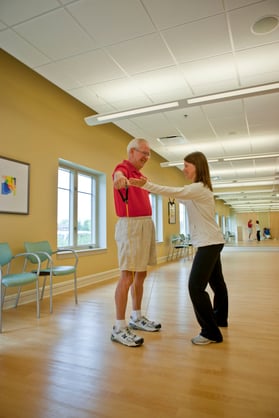 In the fitness and health field, we are asked for advice continually. It is our job to build fitness routines that are safe, comfortable, and something our clients will actually build into an overall resident wellness lifestyle. The difficult part always seems to be creating a program that they like that also fits around all contraindications of diseases and ailments, and having them not give up after a week.
In the fitness and health field, we are asked for advice continually. It is our job to build fitness routines that are safe, comfortable, and something our clients will actually build into an overall resident wellness lifestyle. The difficult part always seems to be creating a program that they like that also fits around all contraindications of diseases and ailments, and having them not give up after a week.
The Importance of Communication in Senior Fitness Education
After observing many fitness professionals with their clients and many years in practice myself, I noticed that one of the greatest obstacles is neither of those two problems, but our ability to communicate with the client and find that connection for them. I’m not talking about the connection of personalities and ability to get along, but that connection where the client understands your thought process and why you are putting them through the “torture.” Education is the key to our success with the clients, and it is how that education is delivered that matters most.
So stop and think about how you deliver your educational pieces. Most likely you lay out your fitness plan. Then you demonstrate the plan. Then at the end of the talk you ask if they have any questions. Of course they reply “no” or “when do we get started?” They have not asked the one most important question that we learn to ask when we are two, but become afraid to ask as we get older: “WHY?”
- “Why are we doing this exercise?”
- “How does it help?”
- “You mentioned the muscles that we will be working—what do they do?”
Anticipating and Answering Residents’ Senior Wellness Questions
We as practitioners already know why we are doing this, so we forget to pass that knowledge on. We move on to demonstrating the exercises and correcting their movements and posture as they do the exercise, until they look like a pro to anyone coming in, but they still are not quite sure why they are doing that exact movement.
I may be one of the biggest “older” kids out there, but I still love the question “Why?” I truly feel that if we understand why we are doing what we are doing, we will stick to it better. Also, if we understand a subject it is more interesting to us. If it is more interesting, we tend to want to try to learn more and become proficient. The trick becomes how to properly educate and make a lifelong plan with our clients rather than just doing it to our clients. We have to know that those why and how questions are running through their heads and take the initiative to help them answer the questions they don’t even know to ask or how to form.
Making Wellness Communications Easy to Understand
The next challenge is the client understanding what you are saying. The Quick Guide to Healthy Literacy, a fact sheet produced by the United States Office of Disease Prevention and Health Promotion, states that “only 12 percent of adults have proficient health literacy.” Impact Information Plain Language Services’ newsletter reports that all health and safety information should be delivered at a fifth-grade comprehension level.
Health information is difficult for most people to understand. There is no difference in the world of wellness. We are asking our clients to trust what we are saying and what we are telling them to do, but many do not understand why they are doing the exercise we are teaching or how those exercises will help make them feel better, possibly decrease potential for chronic diseases, and even lessen the severity of other chronic diseases.
Think about this information and think about what you do. Do you work with your clients, or do you talk to them? You will probably find there is a little of each happening. Watch for part 2 to learn some tips on how to work with your clients and help them enjoy the wellness they are working with you to achieve.
Senior living communities commonly miss out on the opportunity to have a qualified person on staff to help guide residents in the fitness center.
Click below to check out our quick read, The Impact of Staff on Senior Fitness.

